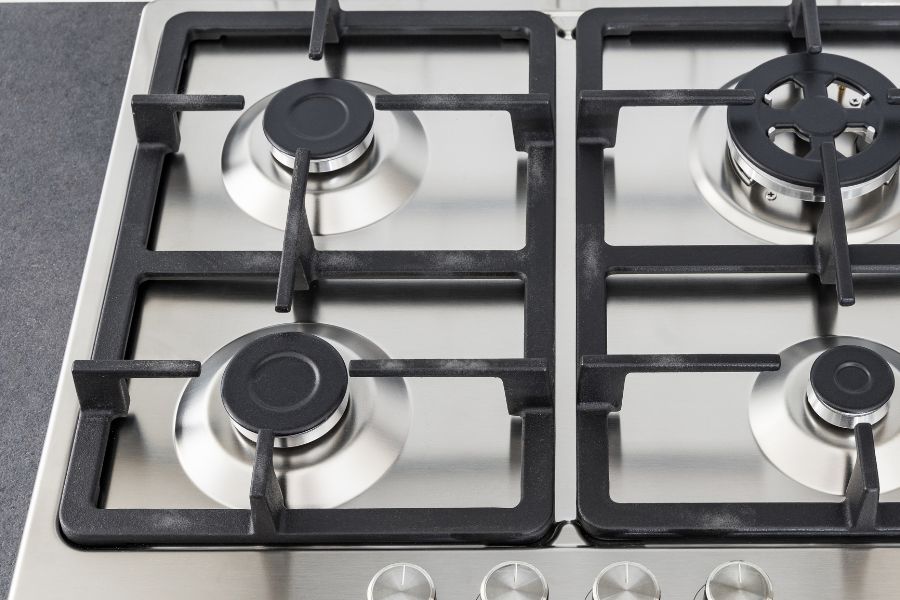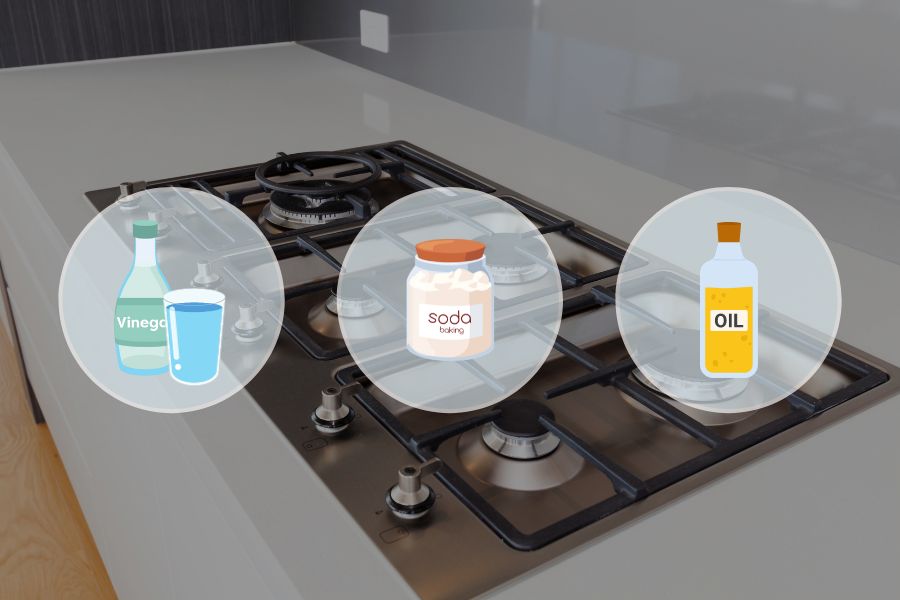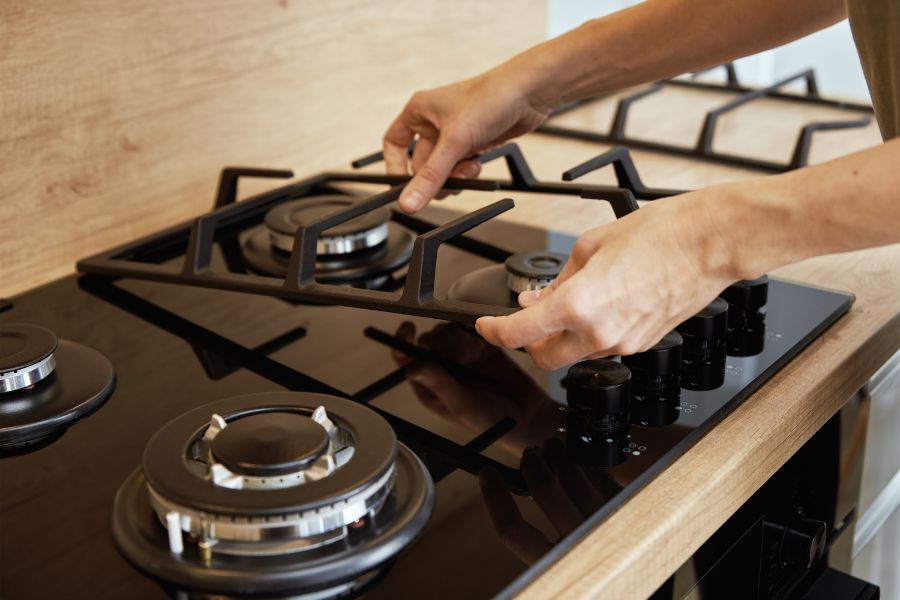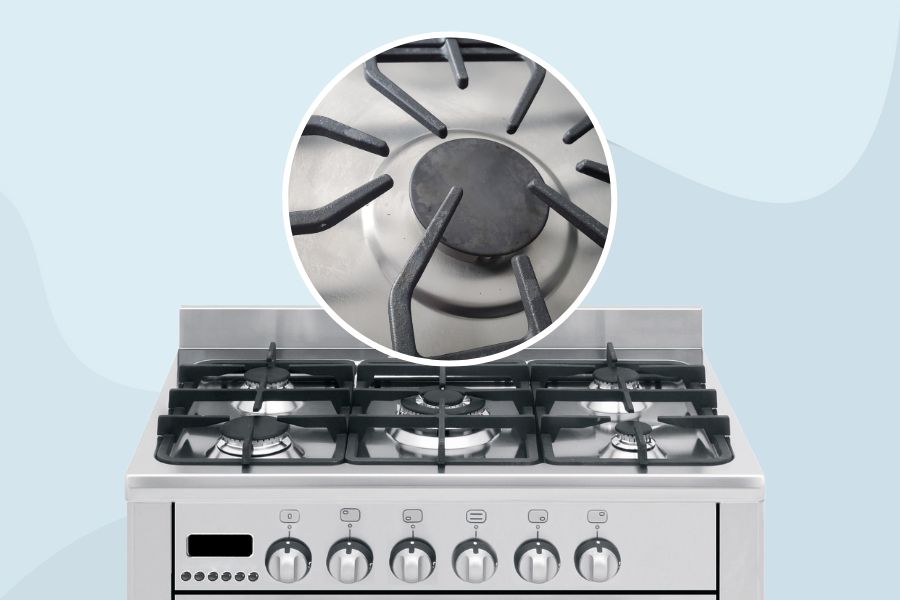Have you ever noticed how your cast iron stove grates start to turn a ghostly white over time? It’s a strange phenomenon that had me scratching my head, too.
But fear not, my friends! I’ve done some digging and discovered the reasons behind this puzzling transformation. Not only that, but I’ve also found some fantastic cleaning methods and handy tips to keep our grates looking fabulous.
So, let’s join forces and reclaim the aesthetic appeal of our kitchen together, shall we?
Why Do Cast Iron Stove Grates Turn White

Cast iron stove, grates can turn white due to oxidation and accumulation of grease and grime over time. The discoloration can become more noticeable as the grates age. The white color is a result of the cast iron reacting with oxygen in the air, which forms a layer of iron oxide on the surface of the grates.
Regular cleaning methods can make this layer difficult to remove, but there are ways to restore the grates to their original color.
In my experience with cast iron stove grates, I’ve observed that they can often turn white due to a few key factors.
Stains from Cooking
Stains from cooking, especially acidic food spills, can often cause cast iron stove grates to turn white. Tomato sauce, in particular, is a notorious culprit due to its acidity. The stains it leaves behind can alter the original color of the grates.
To avoid worrying about your stove grates, cleaning them immediately after cooking is important. Regular cleaning helps prevent staining and whitening of the grates. Using mild dish soap and warm water is usually sufficient for cleaning. However, avoiding excessive scrubbing is important as it can damage the grates.
Moisture and Oxidation
It’s not just food spills that can mess up your cookware’s appearance; moisture and oxidation also play a large role. If you’re like me, you want the freedom to cook without worrying about your cast iron stove grates turning white.
Moisture, particularly when combined with oxygen, can lead to oxidation. This process can cause rust to form on the surface of your grates, giving them a white, unsightly appearance.
But don’t fret; it’s manageable. A simple wipe-down after use can prevent moisture buildup. A rust remover or vinegar and baking soda mix can trick stubborn rust.
Proper care and maintenance can keep your cookware in top shape, giving you the freedom to cook without worry.
Use of Wrong Cookware
You’re only helping if you’re using the right pots and pans. They can leave unsightly residues on your cookware.
This problem is especially apparent regarding cast iron stove grates turning white.
Using the wrong cookware not only affects the aesthetic of your stove but can also impact its functionality over time.
Sticking to pots and pans made from anodized aluminum, stainless steel, or cast iron is essential to avoid this.
These materials are designed to withstand high heat and won’t leave a residue on your grates.
Trust me, by making this simple switch, you’ll be taking a significant step towards maintaining the longevity and efficiency of your stove.
This will grant you the freedom to cook without any worries.
Effective Cleaning Methods for White Stove Grates

In my quest to keep my stove grates pristine, I’ve discovered a few effective methods that I’d like to share.
Vinegar and Water Solution
That’s the beauty of a vinegar and water solution; it’s effective in breaking down grime and safe for your cast iron stove grates. If you’ve struggled with your cast iron stove grates turning white, here’s your solution.
The vinegar and water solution is a simple yet efficient cleaning method that doesn’t compromise your freedom to cook as you, please. It breaks down grime and grease without causing any damage to the grates.
Mix equal parts of distilled white vinegar and water, spray it on the grates, let it sit, and then scrub away. It’s an easy, cost-efficient, and non-toxic solution.
Baking Soda Paste
Remember to underestimate the power of a good baking soda paste. It’s a remarkable cleaner for those stubborn spots on your kitchen gear. It’s particularly effective for those pesky cast iron stove grates turning white.
This simple, homemade solution is a game-changer in maintenance. Mix three baking sodas to one part water, creating a thick paste perfect for tackling those tough stains.
I thoroughly coat the grates using a soft-bristled brush or cloth, ensuring I get into every crevice and awkward spot. I then let the paste work its magic for at least 20 minutes.
Afterward, a rinse with warm water and a good dry leaves my grates looking as good as new. It’s a powerful, cost-effective, and freedom-loving way to keep your kitchen sparkling.
Seasoning
You must season your grills properly to prevent rust and maintain their overall look. If you notice your cast iron stove grates turning white, don’t panic. It’s probably just a layer of seasoning built up over time.
I’ve found that regular cleaning and proper seasoning can prevent this from happening. Start by cleaning the grates with water and a stiff brush. Then, cover every surface of the grate with your choice of fat and bake it at 350°F for at least 30-45 minutes.
Let it cool, re-grease, and bake at 450°F for another 45 minutes. Repeat until the grate is no longer gummy or sticky when cool. This method has worked wonders for me, and I’m sure it will for you too!
Tips for Maintaining Cast Iron Stove Grates

It’s crucial to routinely clean your cast iron stove grates to keep them from turning white over time. This white color isn’t just an aesthetic concern—it can also affect the functionality of the grates.
My top tips for maintaining cast iron stove grates include:
- Cleaning them after each use to prevent grime and stains from settling in.
- Avoiding harsh materials like steel wool that can scratch the surface.
- Always drying the grates thoroughly after cleaning to avoid rust.
- Using pots and pans made of anodized aluminum, stainless steel, or cast iron to help prevent a white or gray residue.
With these steps, you’ll enjoy the freedom of a well-maintained, high-performing stove.
Conclusion
Cast iron stove grates can turn white due to the powerful heat they endure, the remnants of delicious food, or if they aren’t cleaned properly. But don’t fret, my friend! You can effortlessly restore their striking black finish with the right cleaning methods.
Always keep in mind maintaining your grates is essential. Proper care guarantees a stove that looks fabulous and ensures that it will last for many years to come and perform at its best.
Now, let’s get back to the joy of cooking!
Also, Read:
- Can You Paint Gas Stove Grates? A DIY Guide
- How to Season Cast Iron Grates on Gas Stove?
- Can You Put Gas Stove Grates in Dishwasher?
FAQs
Can I Use Oven Cleaner on Cast Iron Stove Grates?
No, it is not recommended to use oven cleaner on cast iron stove grates. The harsh chemicals in oven cleaners can damage the cast iron surface and remove the seasoning.
Can I Use Baking Soda and Vinegar to Clean Cast Iron Stove Grates?
You can use baking soda and vinegar to clean cast iron stove grates. Make a paste using equal parts baking soda and vinegar, then apply it to the grates. Let it sit for a few minutes, and scrub it with a brush or sponge. Rinse thoroughly and dry.
How Often Should I Clean My Cast Iron Stove Grates?
It is recommended to clean cast iron stove grates after each use. This will help prevent the buildup of grease and food particles, making it easier to clean and maintain the grates in the long run.






